12 Flowers That are All the Buzz With Bees
12 Flowers That are All the Buzz with Bees
It’s no secret that bees of all kinds love flowers. There are many spring and summer days when the most audible sounds outdoors are birds chirping and bees buzzing. These pollinators work hard to search for the best flowers and plants for their beloved pollen and nectar to feed themselves and their hive. Although these insects seem to have no preference for specific flowers, there are quite a few that draw them in more than others.
How and Why Do Bees Pollinate?
One question to address before looking at the specific flowers is regarding the purpose of bees collecting all of this organic material. Pollen and nectar are not only food for bees, they are also materials that will be manufactured by the hive to produce honey, which we greatly benefit from. But both materials have different functions for the bees. Pollen is that infamous yellow dust that plagues so many of us with allergy symptoms for months at a time. It is rich in fat and protein, giving the bees energy to continue collecting it for the colony. Bees collect this on their legs and drop a small amount on each new flower. Nectar is a sticky sugar-loaded carbohydrate that is also found in the middle of the flower. Nectar is sucked up by the bee and kept in a small sac until they get back to the hive. Both are processed in the hive to produce honey, as well as “bee bread” that feeds the younger bees.
Bees are attracted to a wide range of flowers and plants. They don’t have one set plant that they specifically use, so they can find what they need in a variety of blooms. The only real deterrents to them are color and clusters. Bees can’t see red, so they don’t gravitate toward crimson flowers for that reason. Flowers or buds in dense clusters also repel them since they are nearly impossible to extract pollen or nectar from in that tight state. The preference of bloom size depends on the length of the bee’s tongue and the size of the bee. A large bee with a long tongue can reach the deepest parts of the flowers that other bees cannot. This whole process may seem like it would kill the flowers from the inside out, but pollination is actually great for them. Blossoms fall off of plants that aren’t pollinated, so the bees keep the plants healthy and alive. It’s a mutually beneficial relationship that leaves us with beautiful flowers and delicious honey.
With all of that being said, there are certainly some flowers and plants that seem to attract bees more than others for different reasons. Let’s look at some of the bees’ favorite productive plants and why they are a haven for the pollinators to this day.
Aster
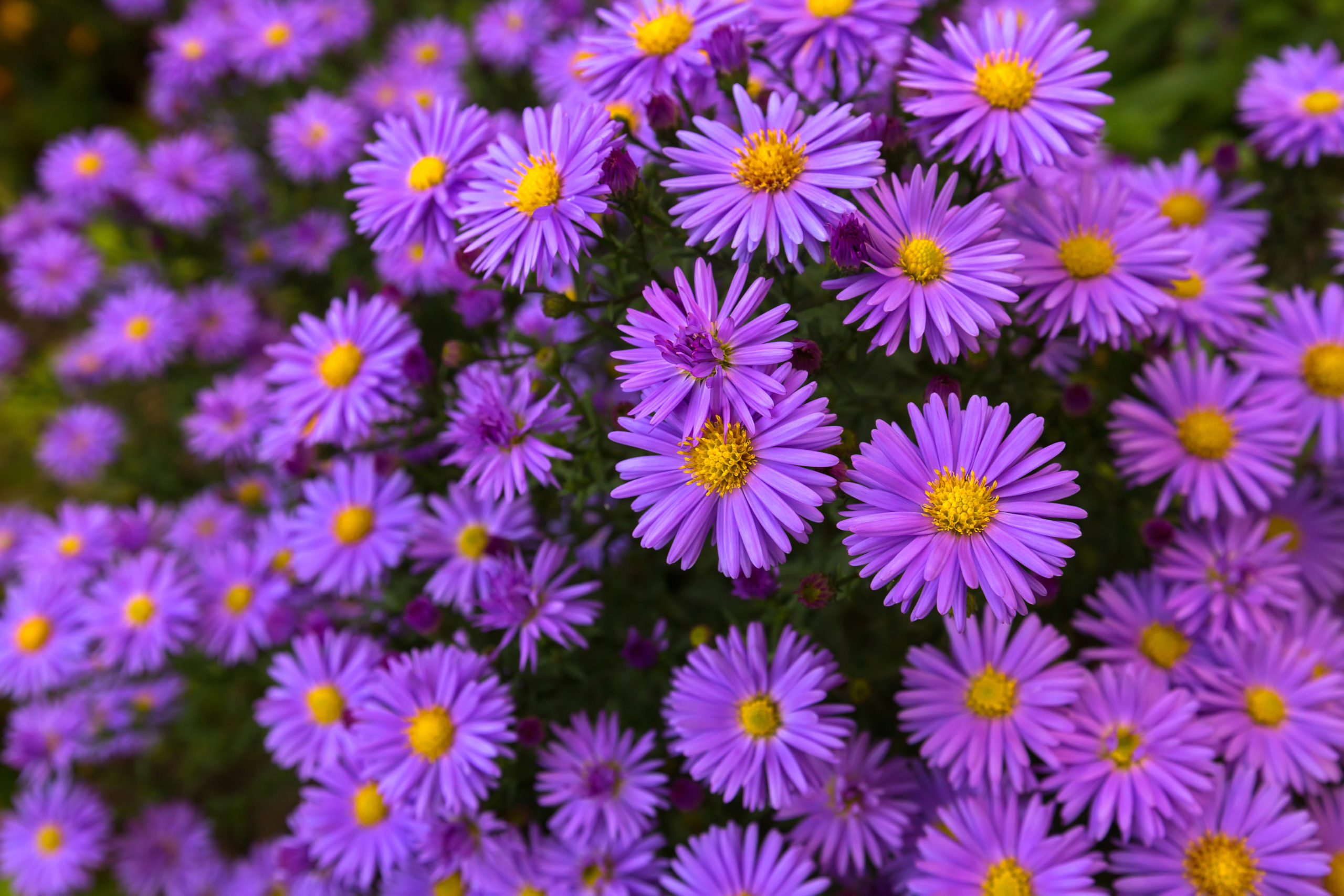
There are many different types of aster that bees love, and one notable kind is later on this list. Aster is a late-flowering plant, which is perfect for queens that are going into hibernation soon. This perennial flowering plant produces nectar and pollen when the other flowers are slowing down with the temperature dropping. It grows close to the ground, which provides ground cover for a garden. This also makes it easy for the bees, since it is not a huge plant that is very tall. The purple daisy-like flowers also provide a nice pop of color to any yard, so it might be fun to include them in your garden for some variety of color.
Bottle Brush
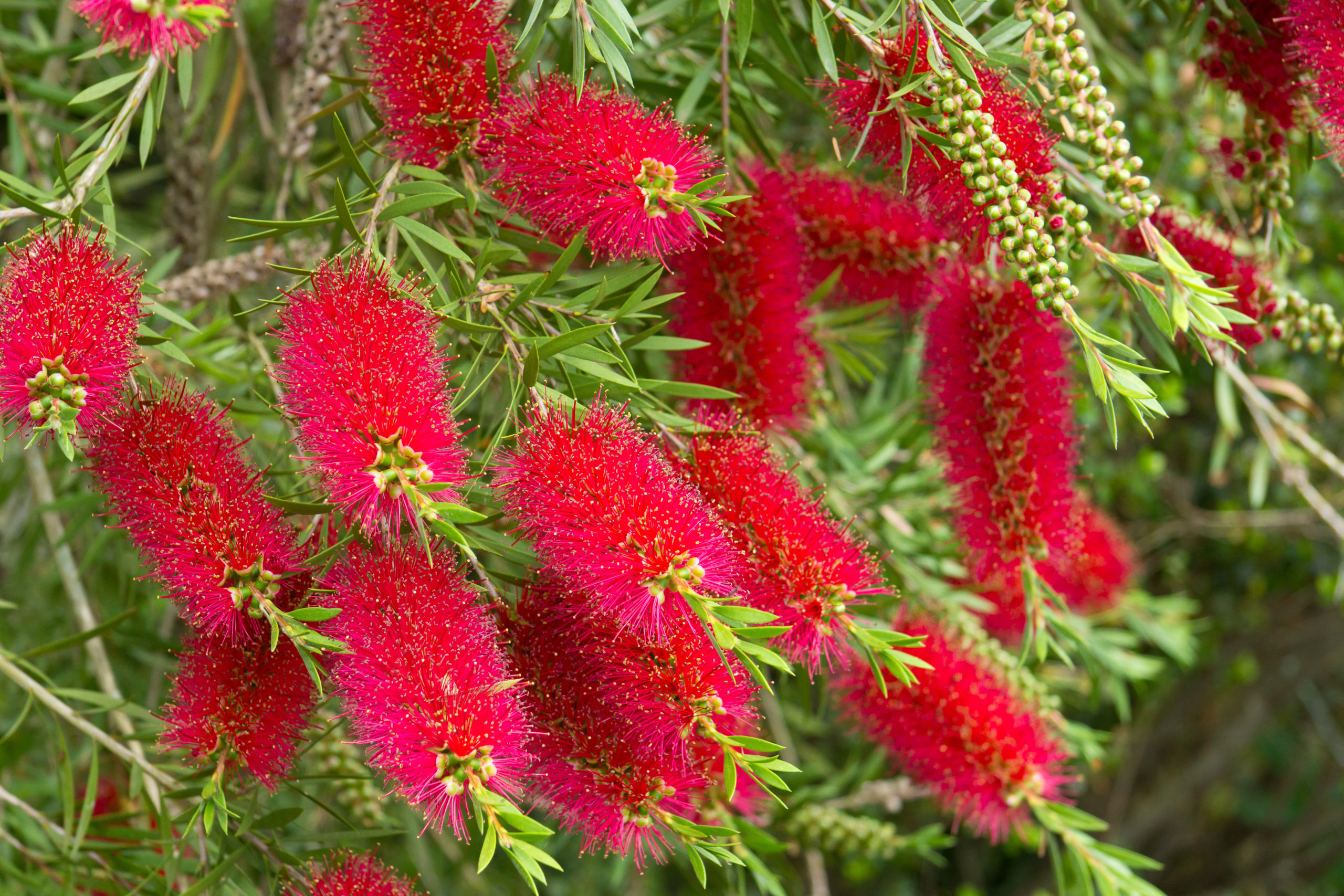
This popular plant is a favorite of bees for many reasons. One large reason is that they have an extensive blooming season, so they are in bloom for essentially the entirety of the months that bees are productive. It also thrives in full sun, which seems to be a pattern in bees’ favorite plants. Their blooms are attractive to bees because they produce lots of pollen and nectar, which is clearly their drive for finding the best plants. Although bees seem to never leave these flowers alone once they bloom, there is irony to be found in the fact that the flowers are red and therefore not visually processed by the pollinators.
Catmint
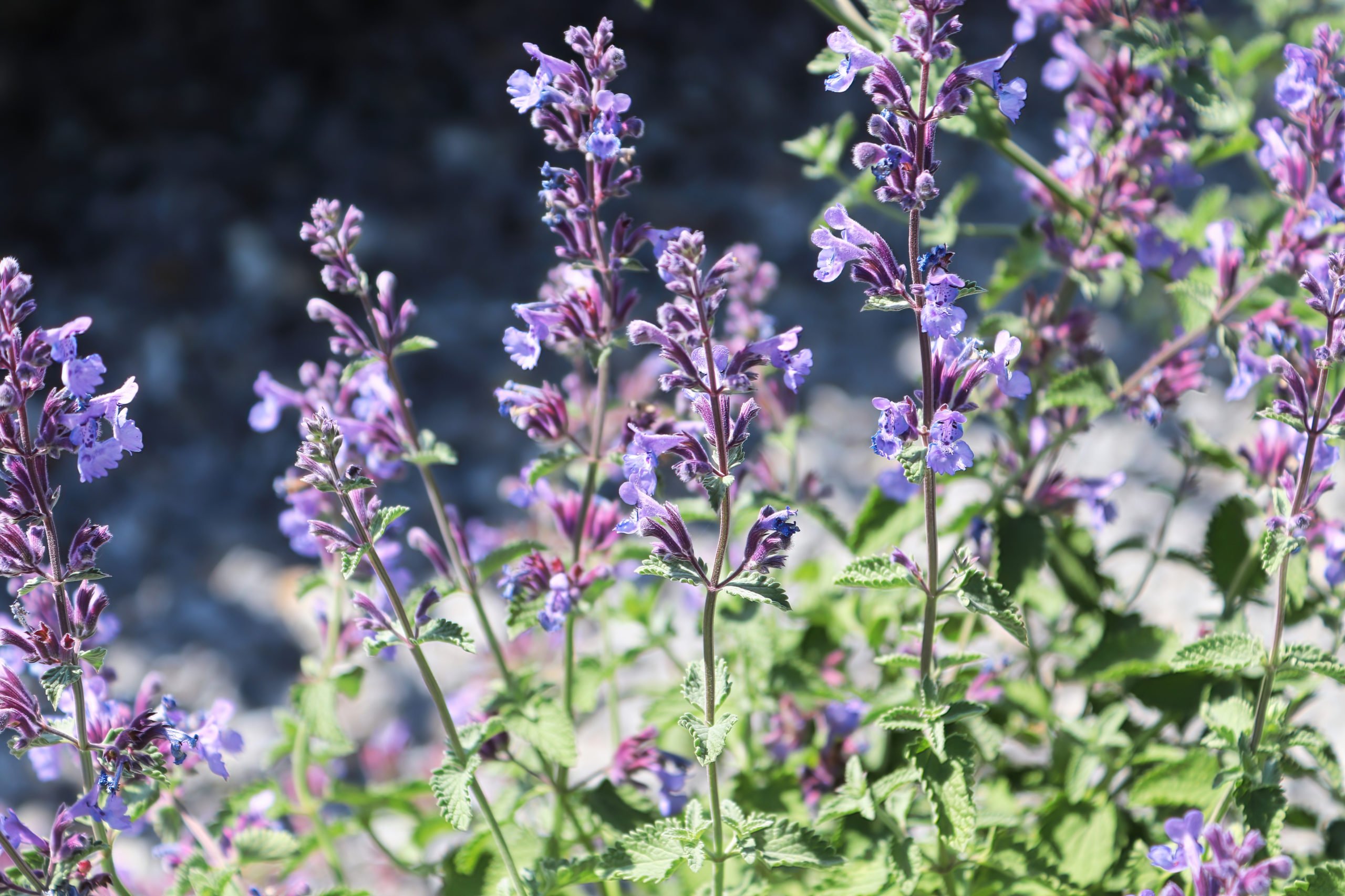
These lavender-esque flowers are also favorites of bees since each bush grows many blooms. There is minimal pruning needed for this reason, so it is a great plant to have in the yard. It is also a hardy plant, which means it can survive a variety of conditions. It is an aromatic herb that is in the mint family, so it will produce a pleasant smell where it is planted. Catmint doesn’t attract many pests due to its aromatic nature, so the bees (and you) won’t be annoyed with pesky insects coming around.
Goldenrod
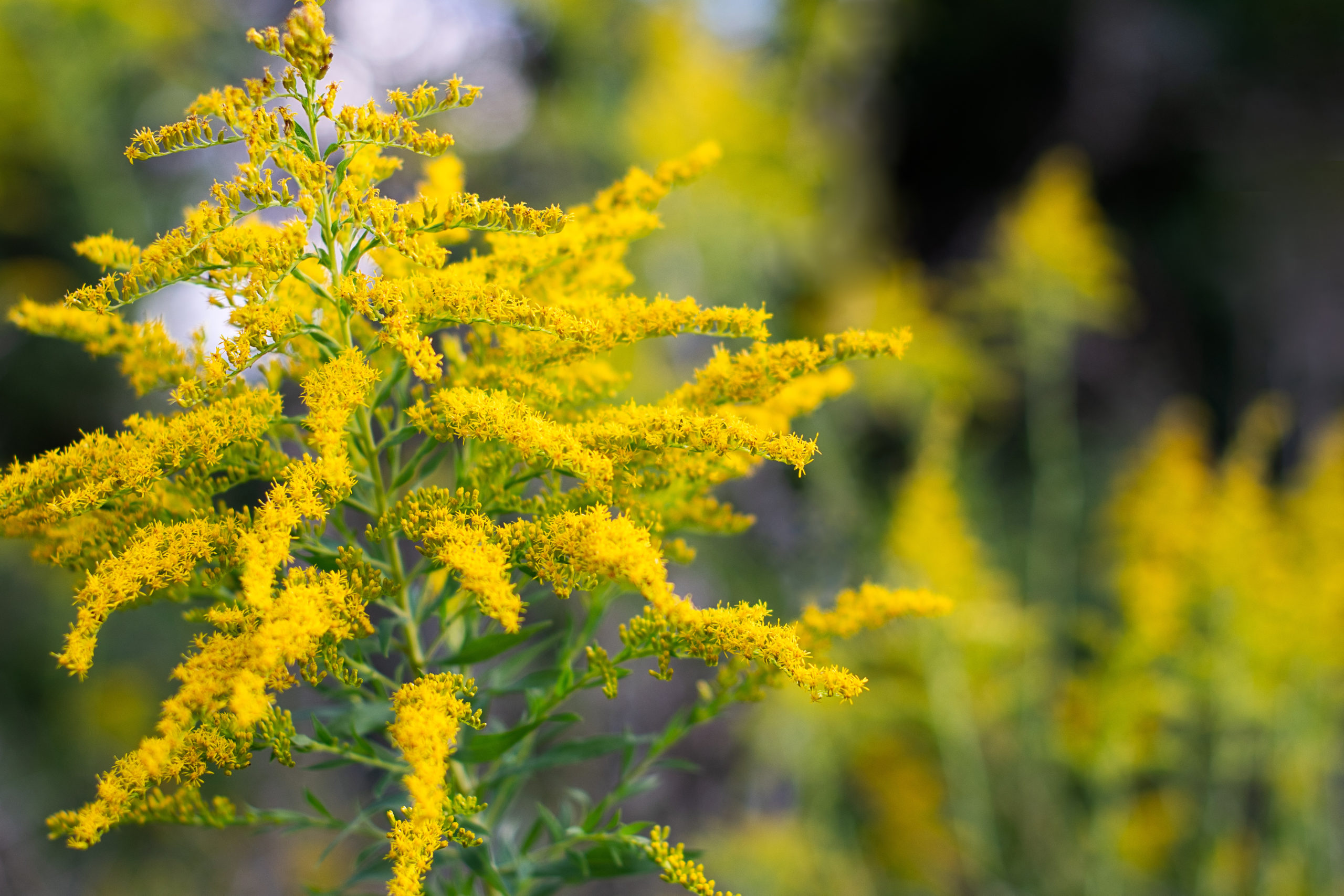
These feathery, bright yellow blooms, also called Solidago, are the perfect bright addition to any yard. They attract all kinds of pollinators, especially honeybees and bumble bees. They bloom late in the blooming season, similar to asters. Anything that blooms in late season is popular among bees because of their availability when everything else is closing up for the fall and winter. Yellow is also a favorite color of bees (ironically), so these blooms are very appealing to any pollinator flying by on their hunt for food. They are usually found in open fields and meadows, so they may not be the easiest choice for a small garden.
Lilac
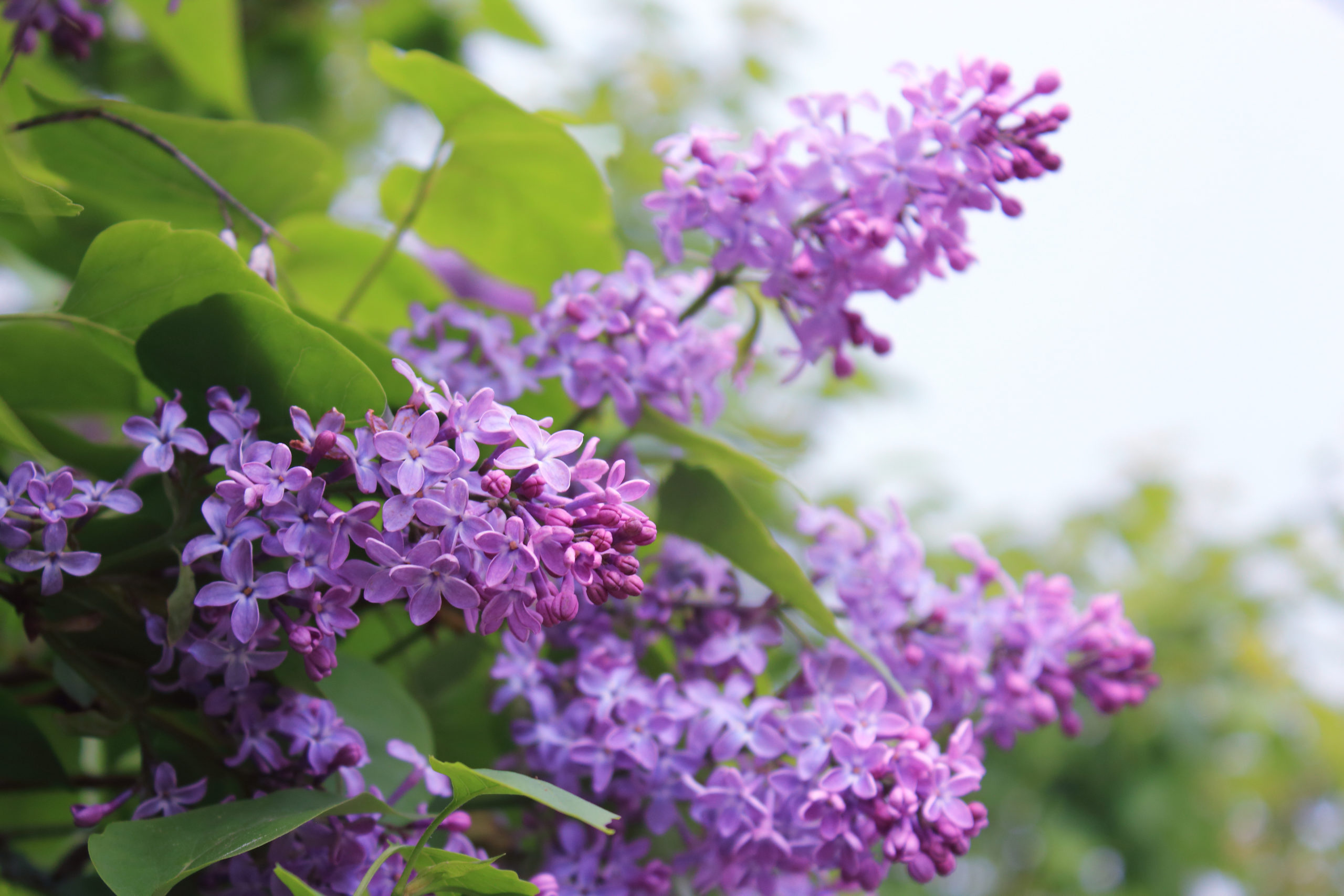
Lilacs are notoriously easy to grow and maintain, which makes them a favorite of humans and bees alike. Their floral fragrance is not only attractive to us, it is also a major draw for bees. Most lilacs grow at eye level, so a bee flying lower through the air will likely run into a lilac haven if they follow the perfumey scent. The typical lilac shrub can grow up to twelve feet tall, so there are plenty of blooms to produce the nectar and pollen that bees need. Lilacs bloom in the spring and are ready for pollination as the bees emerge from their hibernating hives.
New England Aster
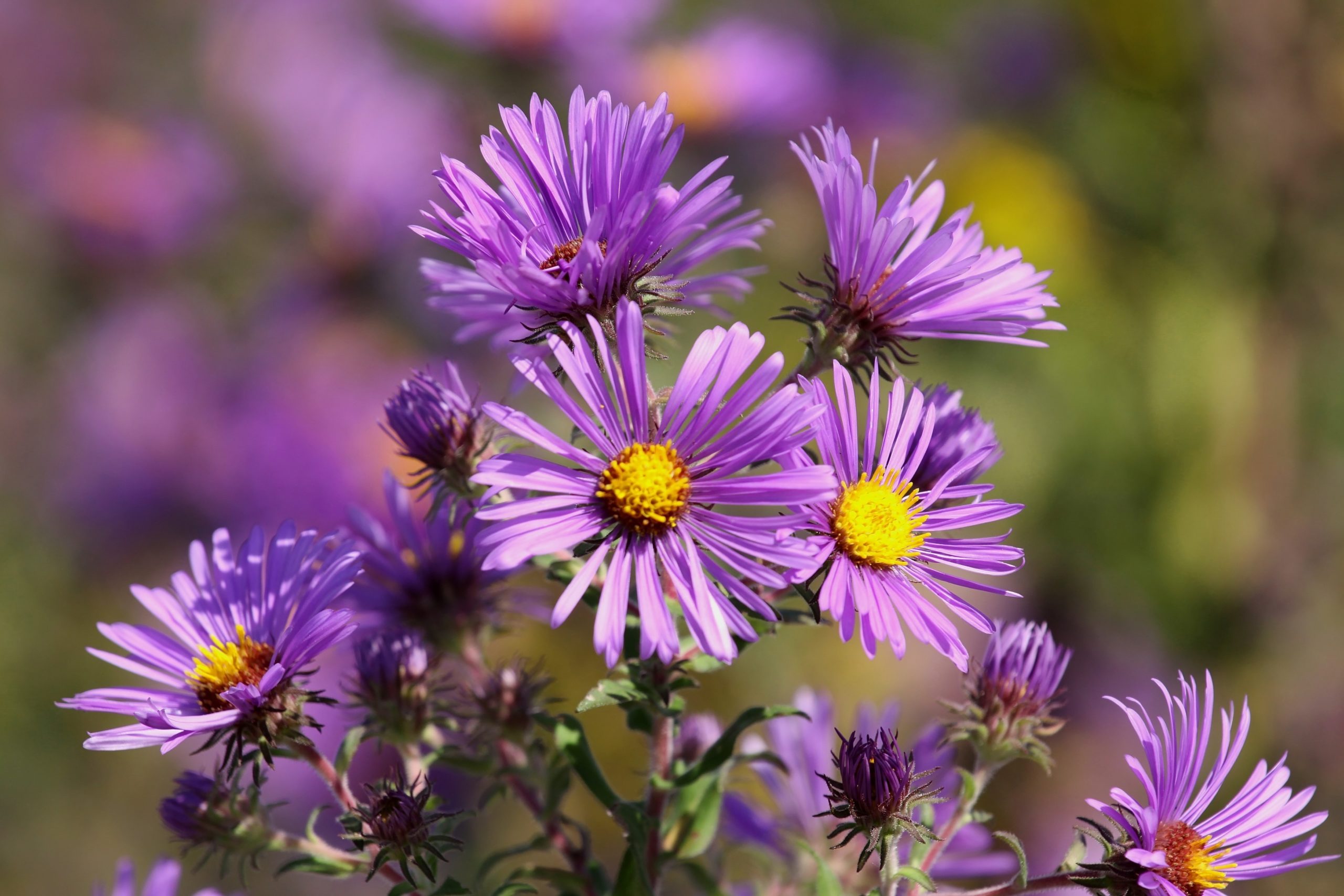
This specific aster is a favorite of bees all over the country since they ironically don’t only grow in New England. They can range from dark purple to light purple-pink, and look a little less full than the typical aster. The bush can be up to six feet tall, and are known to produce a lot of nectar. Even though it likes moist soil the most, it can grow in essentially any condition. The New England Aster also loves full sunlight, which is perfect for bees since they are most active in the daytime.
Pale Purple Coneflower
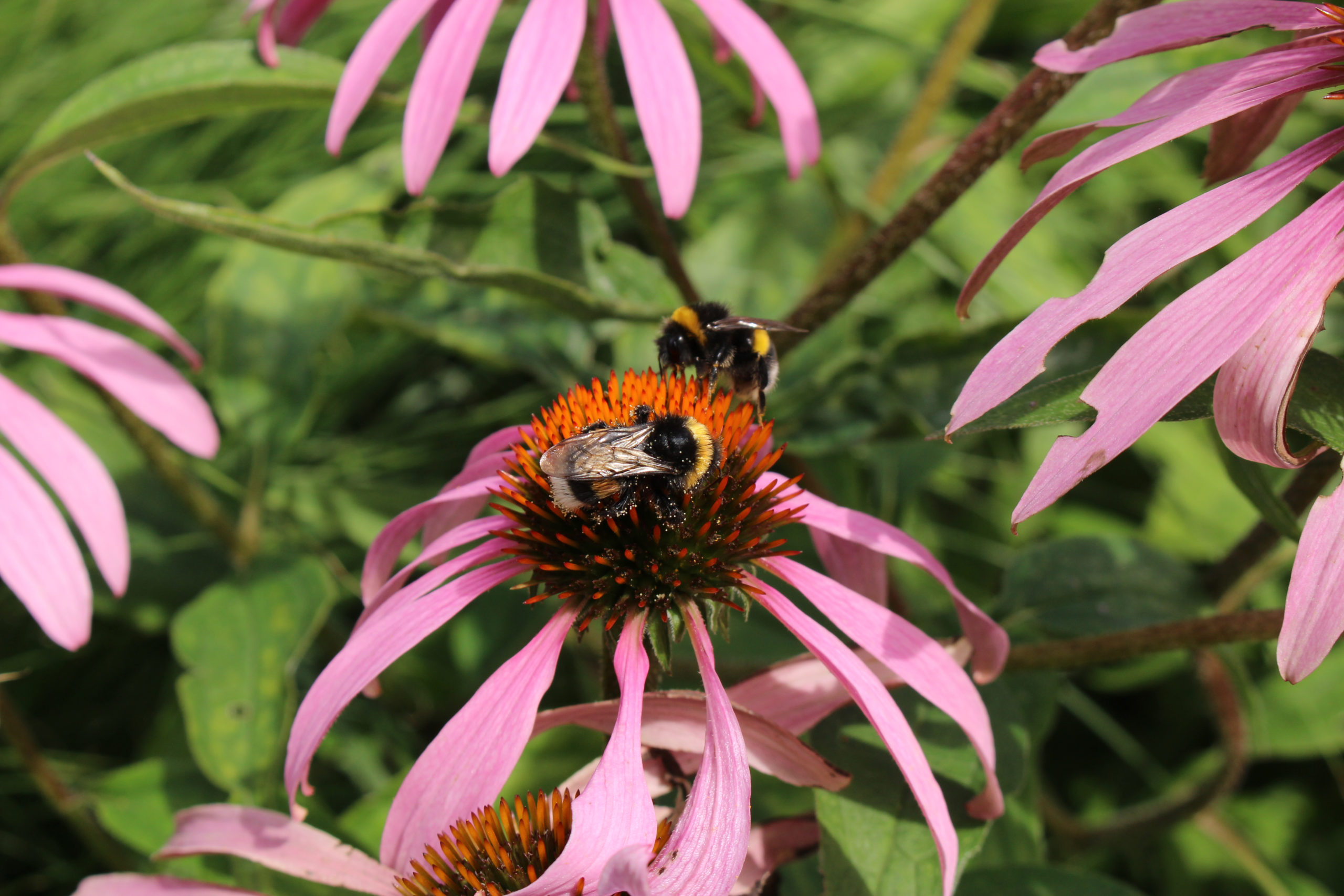
This strangely-shaped flower grows abundantly where it sprouts, which gives bees more opportunities for pollination. They have plenty of nectar, which attracts pollinators of all kinds, including birds and butterflies. Pale purple coneflowers thrive in open areas with mixed grasses and flowers, so it may be better to plant it in the general yard area instead of a specific garden section. It can survive a wide range of conditions, including drought and humidity, so the pollen and nectar content remains high for the bees to enjoy.
Peony
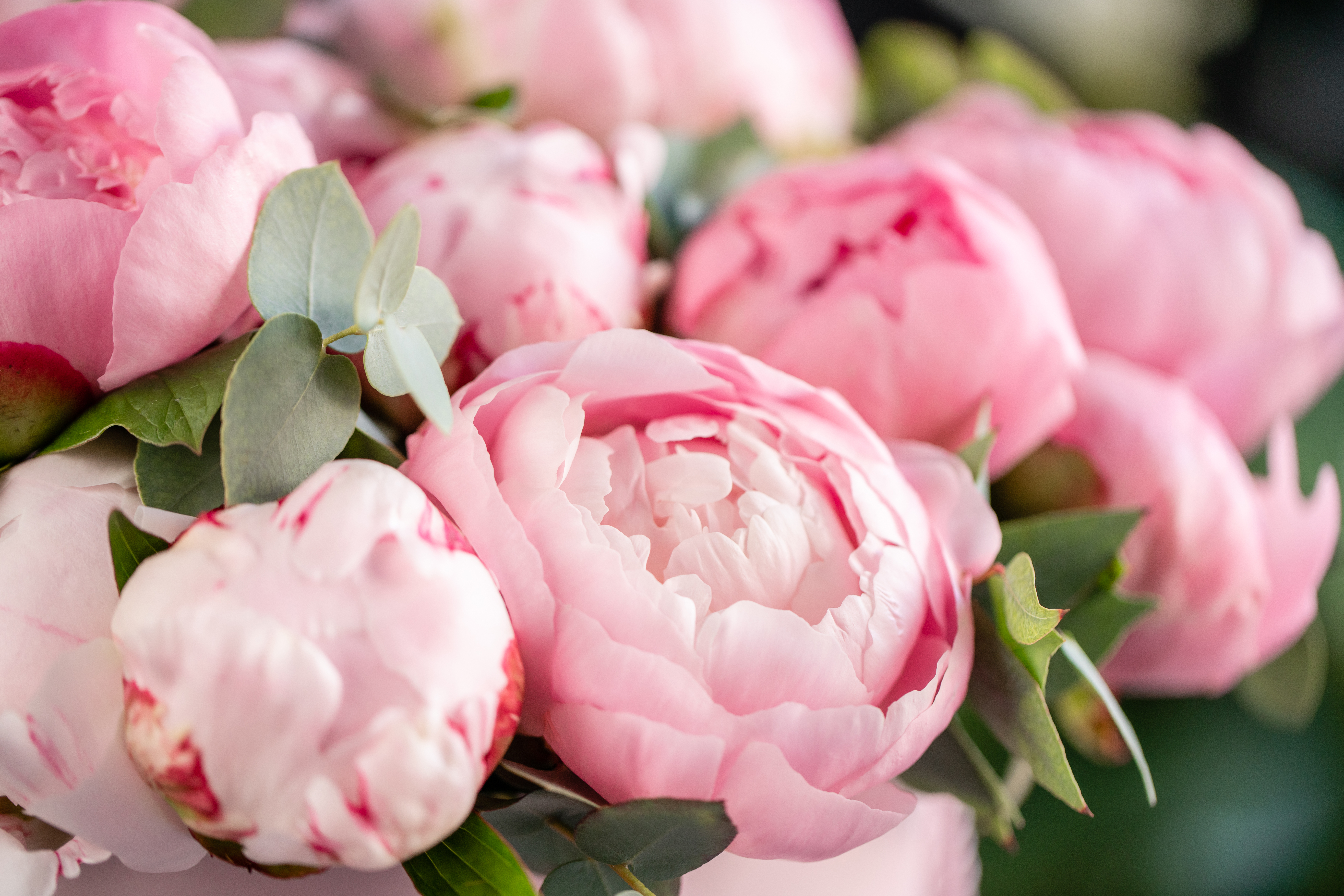
Peonies are a huge favorite of bees because of their abundance of nectar, which is the most delicious part of a bee’s job. Their nectar is so prominent that it makes the petals sticky to the touch. Peonies have extrafloral nectaries, which means that the nectar is produced outside of the typical nectar-rich inner part of the flower. Single peonies are easier for bees to pollinate, since the double peonies have too many petals. But for large bees, the pollen-covered petals are a major perk for pollinating these flowers.
Photinia
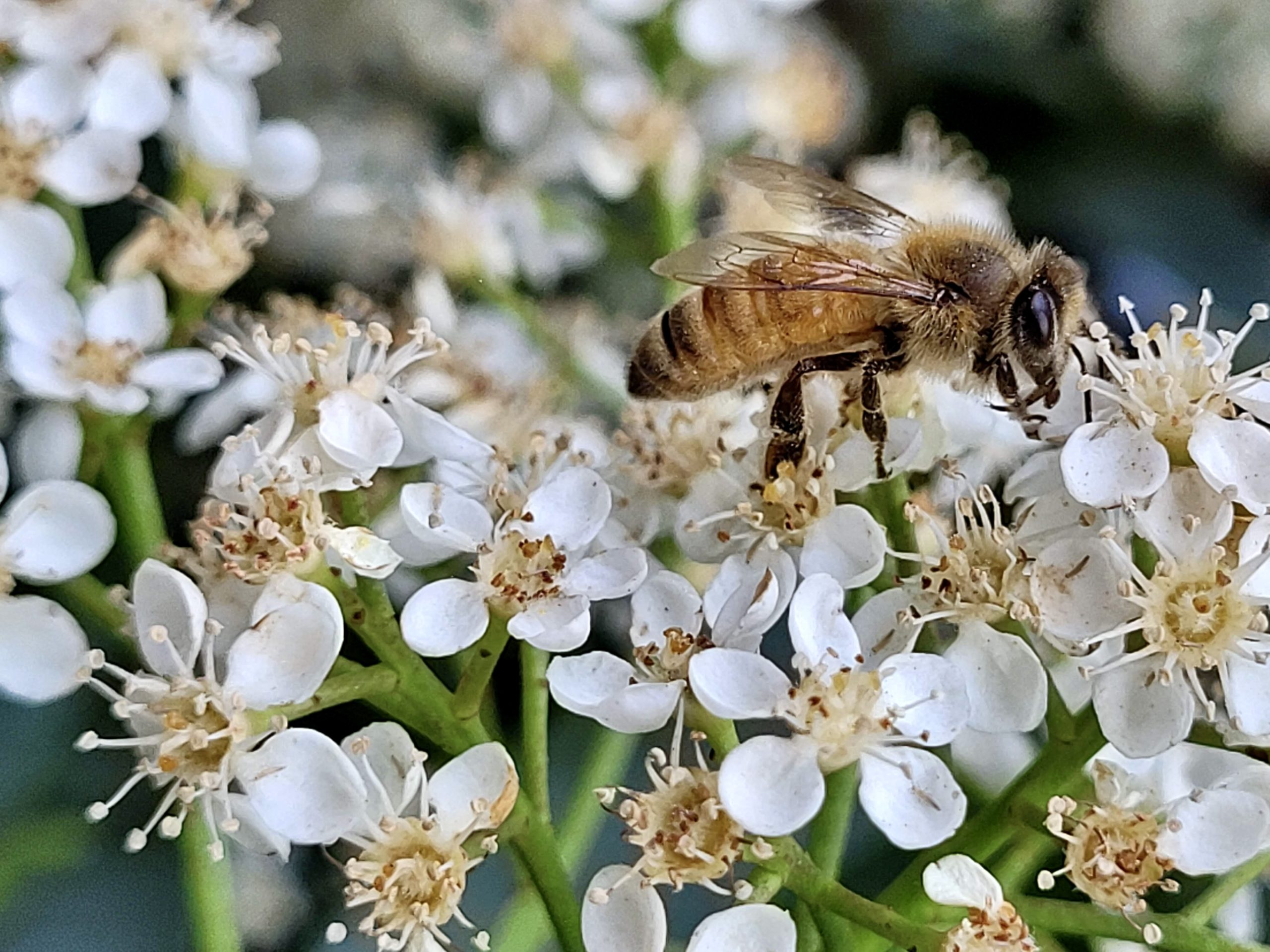
This tree is known for its white flowers and red leaves, and is often covered with bees in the spring. It thrives in full sun, especially when it isn’t pruned or cut back, but it can also do well with partial shade. The white flowers in the spring turn into red fruit in the fall. Even though photinia is part of the rose family, which bees typically don’t enjoy due to their tight petals, it constantly draws bees in with its fragrant scent and explosion of blooms in the spring. It can also withstand high temperatures when it receives frequent watering at its base, so the flowers don’t suffer in the dead of summer.
Poppy
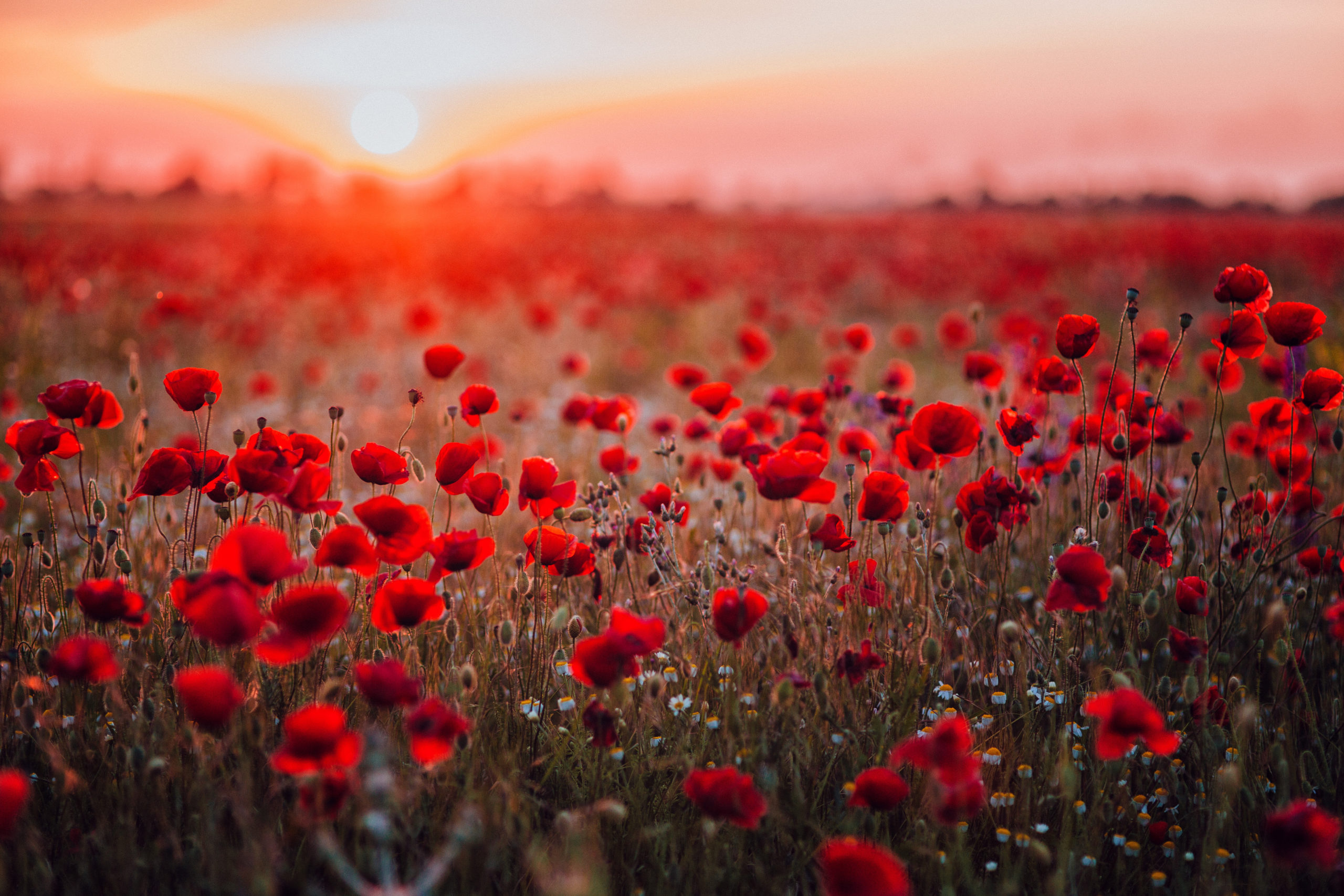
This flower does not just grow on the West coast, even though the California variety is known to pop up on its roadsides. It comes in a variety of colors, ranging from white to red to purple with lighter variants in each section. One interesting fact to note about these flowers is the fact that they don’t product nectar, so they can’t be used by bees as a food source. But its pollen is some of the best around as it doesn’t have many toxins in it. Since the pollen is so clean, it makes it easier for the bees to manufacture into honey; they don’t have to take the time or cautionary measures to remove the toxins that would harm them. Poppies also look pretty in any yard or garden, so they’re a great choice to plant in the springtime.
Sedum
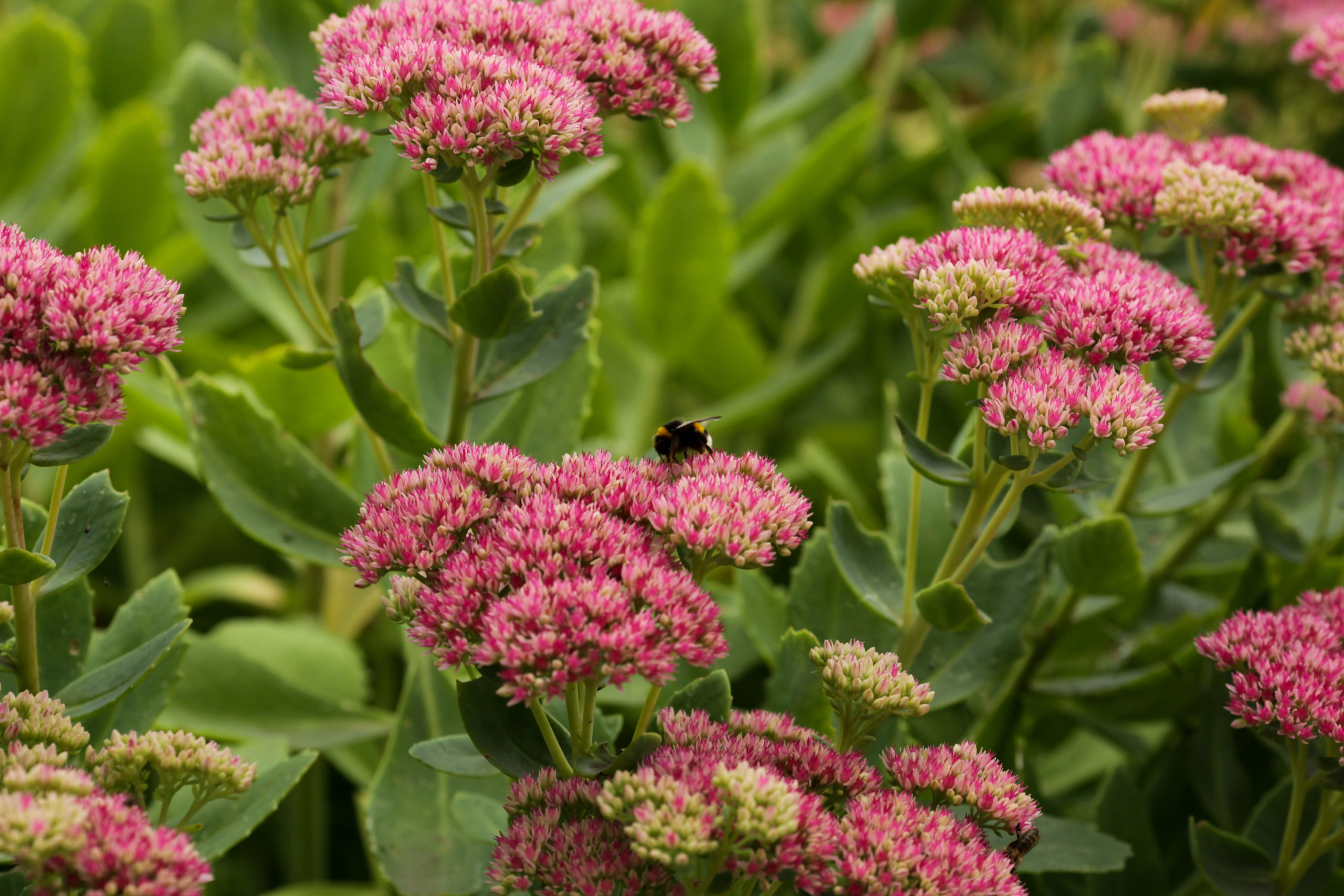
Sedum encompasses a whole genus of plans that flower with the family Crassulaceae. They are known for their thick leaves and huge clusters of flowers. Sedum, or stonecrop, comes in two different varieties: low-growing and upright. The names encompass exactly what they do while growing; low-growing stay along the ground, while upright grow into tall bunches with lots of small flowers. Bees are typically attracted to the upright sedum plants since their flowers are at the perfect height to be available for flying bees while keeping them off the ground and away from predators down below. Sedum in general is heat-tolerant and will thrive the most if it’s planted in early spring in an area that receives a lot of sun. It attracts a variety of pollinators as well as animals like deer and chipmunks, who love its thick leaves.
Wild Quinine
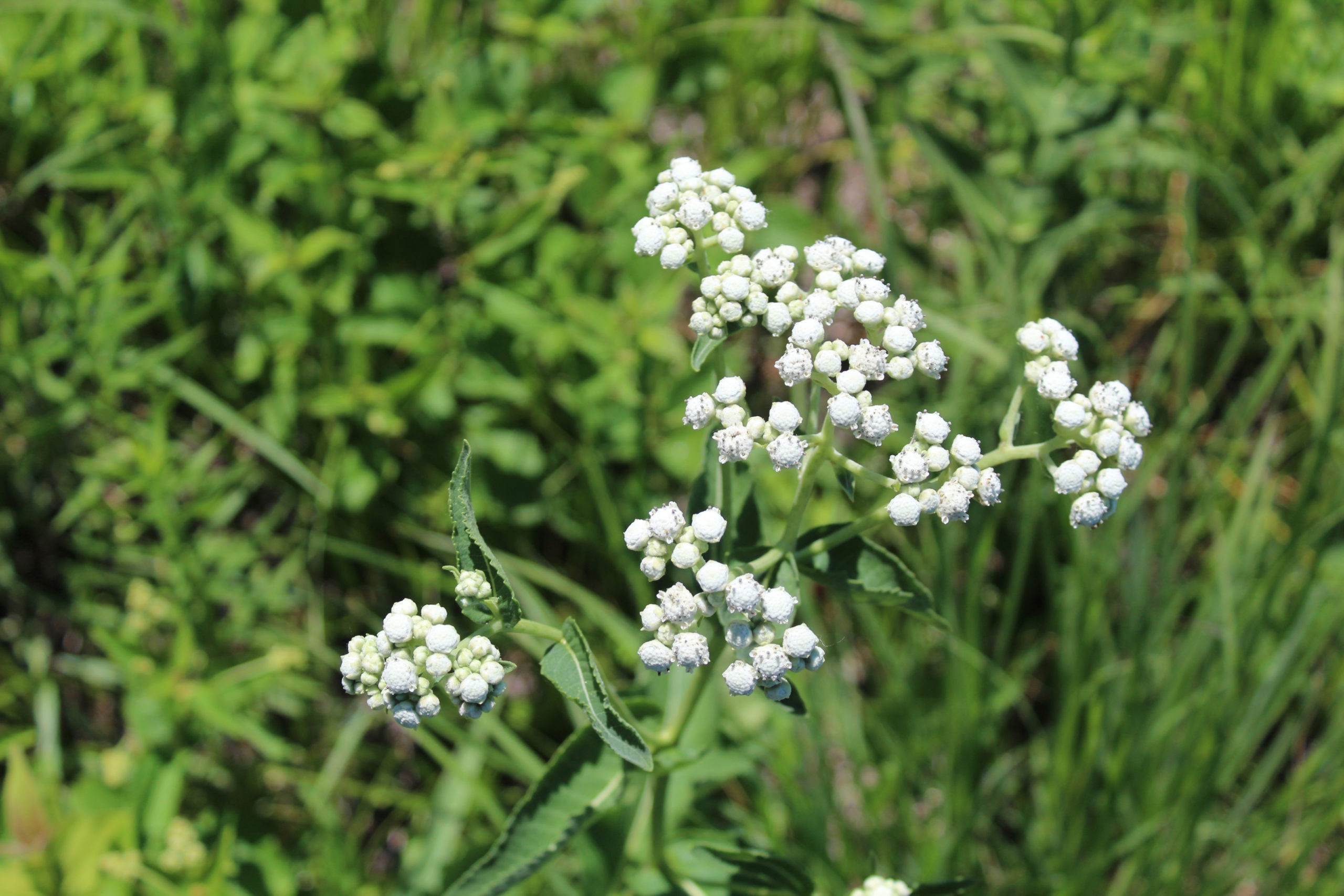
This perennial plant grows pearl buds that grow into small white flowers. Its extensive bloom season is another reason that bees love this rare plant. Wild quinine is resistant to many kinds of pests and plant diseases, which is how bees are still able to find so many blooms throughout the warmer months. The flowers are gathered in tight clusters, which makes it easy for bees to go from flower to flower and collect as much pollen and nectar as possible. The full sun exposure allows the blooms to last well into the beginning of autumn, and gives bees plenty of time to pollinate the perennial.
Our Pest Control Values the Ecosystem
Bees are not inherently bad or dangerous, unless you’re allergic to their stings. But if you are experiencing swarms of bees or other flying stinging insects, it may be time to call pest control and get a handle on the situation. We can take care of any bee infestation without harming the ecosystem around your plants, flowers, and garden so that you can still enjoy the beauty of the greenery and the warmer months.
Citations
Almanac Editors. (n.d.). Sedum. Almanac. Available at https://www.almanac.com/plant/sedum (Accessed on March 28, 2022).
Bodette, M. & Lindholm, J. (2017, August 18). How do bees make honey and why do they sting? VPR. Available at https://www.vpr.org/programs/2017-08-18/how-do-bees-make-honey-and-why-do-they-sting (Accessed on March 28, 2022).
Brandsen, L. (2020, May 13). 25 top easy-care plants for Midwest gardens. Midwest Living. Available at https://www.midwestliving.com/garden/ideas/25-top-easy-care-plants-for-midwest-gardens/? (Accessed on March 28, 2022).
Corrigan, R. (n.d.). Photinia trees. SF Gate. Available at https://homeguides.sfgate.com/photinia-trees-26077.html (Accessed on March 28, 2022).
Darrisaw, M. (n.d.). 12 flowers that are good for bees. Southern Living. Available at https://www.southernliving.com/garden/flowers/flowers-for-bees (Accessed on March 28, 2022).
Honeybees and peonies, a perfect match. (n.d.). Alaska Peony Cooperative. Retrieved on March 28, 2022, from https://www.alaskapeonycooperative.com/blog/2021/10/15/honeybees-and-peonies-a-perfect-match
Myers, M. (2022, January 21). 17 best flowers that attract bees. Birds & Blooms. Available at https://www.birdsandblooms.com/gardening/garden-bugs/top-10-flowers-that-attract-bees/ (Accessed on March 28, 2022).
Ryan, B. (2020, November 29). 10 native flowers that will thrive in your Chicago garden. LawnStarter. Available at https://www.lawnstarter.com/blog/chicago-il/native-plants-and-flowers-that-will-thrive-in-your-chicago-garden/ (Accessed on March 28, 2022).
Sweetser, R. (2021, April 14). The best flowers for bees. Almanac. Available at https://www.almanac.com/best-flowers-bees# (Accessed on March 28, 2022).
The Bee Box Team. (n.d.). Planting bottlebrush shrubs for the bees. The Bee Box. Available at https://www.thebeebx.com/single-post/2019/04/09/planting-bottlebrush-shrubs-for-the-bees (Accessed on March 28, 2022).
Wild quinine. (n.d.). Prairie Nursery. Retrieved on March 28, 2022, from https://www.prairienursery.com/wild-quinine-parthenium-integrifolium.html
Request a Free Quote Today
(We do not share your data with anybody, and only use it for its intended purpose)
